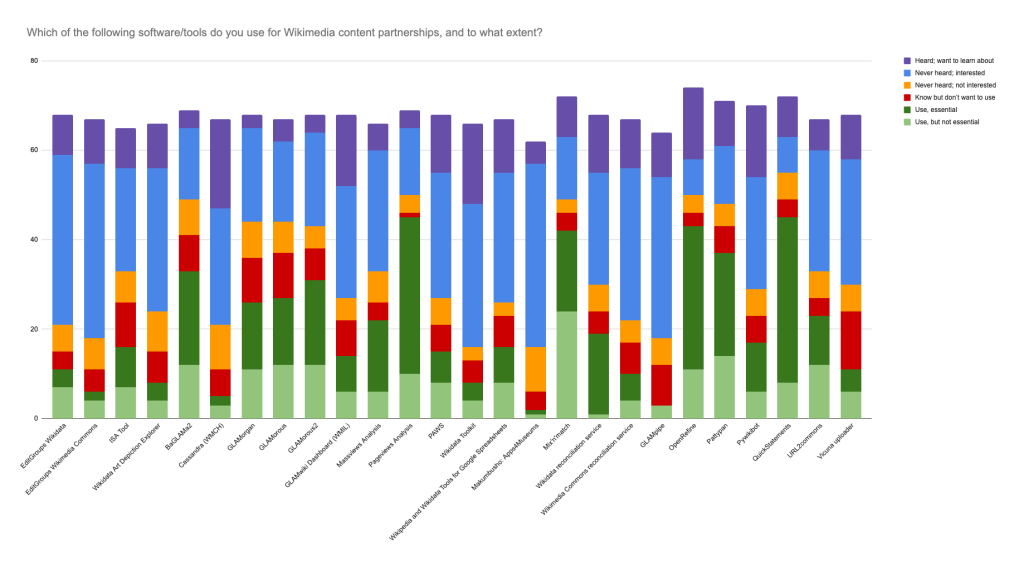
From December 6, 2022 until January 16, 2023, Wikimedia Sverige held a survey to help prioritize the most popular software tools used for content partnerships in the Wikimedia movement (collaboration around content on Wikimedia projects, with external partners, such as GLAMs and other organizations).
Why a survey, and why now?
Wikimedia Sverige is experimenting with the development of a Thematic hub for content partnerships in the Wikimedia movement. One area of experimentation is: how can such a thematic hub support software development of strategically important tools used in content partnerships? To help the Wikimedia movement to make decisions in this area, we held a survey to ask Wikimedians and external partners some basic questions about the Wikimedia projects they partner in, and the tools they use to work on these partnerships.
Some insights from the survey responses
77 quite diverse respondents (across regions, backgrounds, and age groups) filled in the survey. Here are some (selected) insights – most of them not very surprising. The detailed report is available on meta.wikimedia.org and as a PDF on Wikimedia Commons.
On which Wikimedia projects do content partnerships take place?
- Wikipedia is a very important platform for content partnerships. But structured data in the Wikimedia movement (Wikidata, Wikimedia Commons with structured data (SDC)) also carries significant weight. There are regional differences: especially in the South Asia region, Wikisource is an important content partnerships platform. For regions with only few respondents in this survey, more in depth checks of these patterns may be needed.
- For the next five years, respondents generally indicate that all Wikimedia projects will remain important, but we also see the pattern here that projects with structured data will gain importance.


Which Wikimedia tools are important for content partnerships?
- Two broad categories of tools are especially crucial to content partnerships work: statistics tools, and batch contribution tools.
- In the category of statistics tools, the popularity of tools varies. The very flexible Pageviews Analysis is by far the most popular; various more specific dashboard tools receive similar appreciation and seem at a similar level with each other in popularity.
- In the category of batch contribution and upload tools, two tools focused on structured data and Wikidata contribution rank most highly: QuickStatements and OpenRefine. Pattypan follows (with a small distance) as the third preferred tool, receiving relatively more appreciation from Wikimedians (and a bit less from cultural institution workers).

Do you find that the results of this survey are as expected, or are there surprises? Did the survey (or the conclusion) miss important angles and perspectives? We welcome your comments and feedback on the talk page on Meta.
The Content Partnerships Hub plans to organize follow-up conversations for this prioritization exercise. We will follow up with survey respondents who indicated that they are interested in contributing to this decision making process. If you haven’t entered your contact details via this survey but you would like to contribute as well, please contact Sandra Fauconnier at sandra.fauconnier@wikimedia.se.

Can you help us translate this article?
In order for this article to reach as many people as possible we would like your help. Can you translate this article to get the message out?
Start translation